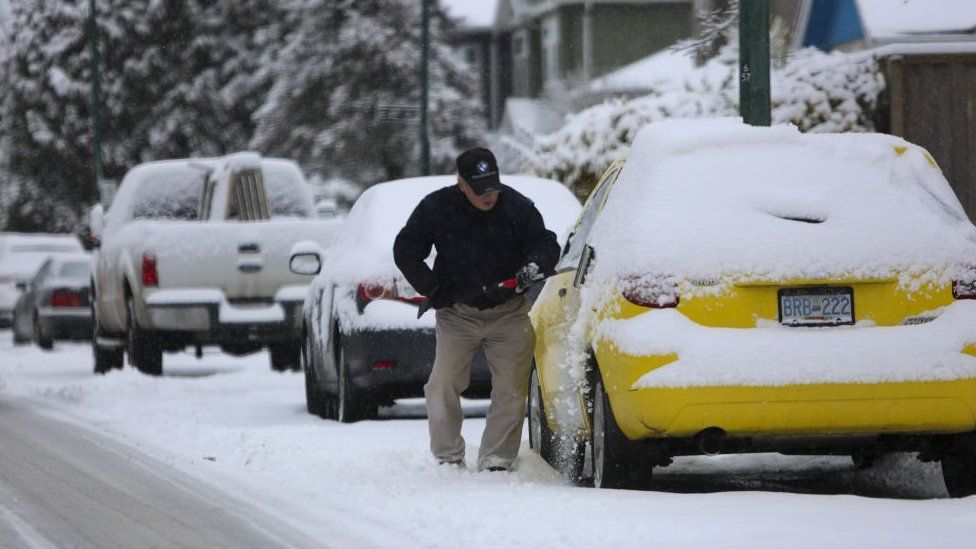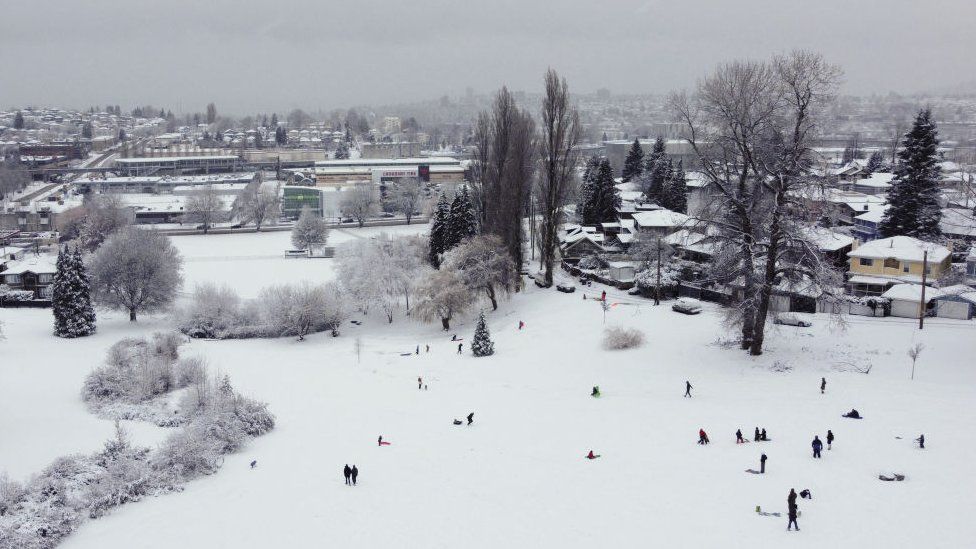
A massive winter storm is expected to bring icy temperatures, howling winds and blizzard conditions to vast swathes of the US and parts of Canada in time for the holiday season.
It's likely to disrupt plans for millions at one of the busiest travel periods of the year.
The storm is forecast to hit the Midwestern US and Great Lakes region - including Ontario, Canada - later this week before heading towards the east coast. Officials are warning it could bring record low, life-threatening, temperatures.
It could even become a "bomb cyclone" - an unofficial term for a certain type of powerful, rapidly strengthening storm.
But experts say there are a number of measures Americans can take to stay safe, whether they stay at home or hit the roads.
How to stay safe at home
Americans in the upper Midwestern US and Great Lakes region - where more than one foot (30cm) of snow is expected in some areas - should abide by a rule of thumb for household storm preparedness. "The first 72 are on you," said Eric Stern, a professor at the University of Albany's College of Emergency Preparedness, Homeland Security and Cybersecurity.
This means that individuals and families should have enough food, water and essential medications to last at least 72 hours - or three days.
It's wise to be prepared with supplies for even longer periods than that, especially for vulnerable populations like the elderly and those with health conditions, Prof Stern said.
Michael Muccilli, the winter programme co-ordinator with the National Weather Service, advises stocking up on first aid supplies, a torch and batteries in case of a power outage.
People should also have an emergency heat source such as a properly ventilated generator and a functional carbon monoxide detector.
Winter supplies are useful as well, including ice melt salt and a spade to help clear pavements and driveways of heavy snow.

How to stay safe on the roads
Some conditions are simply too dangerous to drive in, experts say.
If a blizzard warning is in effect for your area, it's best to stay home and wait until the warning has passed, Mr Muccilli said.
Blizzard conditions include visibility of less than a quarter of a mile (400m) and winds greater than 35mph (56km/h).
"Those two things combined can create whiteout conditions where you literally cannot see right in front of you, so you do not want to be outside in that kind of a storm," Mr Muccilli said.
For longer journeys, drivers check forecasts and conditions for key points along the trip as well as the destination.
Travellers should aim to be "well rested, well fed and well hydrated" before starting a winter journey, Dr Stern said, adding that their vehicle should be in good condition and have snow tires fitted.
Before heading out, drivers need to stock their car with a full tank of petrol as well as an emergency supply kit containing warm clothing, a mobile phone charger, jumper cables, a first aid kit as well as salt, a snow shovel and snow brush for if the car gets stuck, according to experts.
Once out on the road, travellers should allow extra time to reach their destination and drive slower than usual, as the roads may be icy.
If conditions turn out to be more dangerous than expected, reassess, said Dr Stern. "Do not let pride stop you from turning around or seeking safety along the way," he said.
This video can not be played
To play this video you need to enable JavaScript in your browser.
And for those stuck in traffic, the safest bet is almost always to stay in the car as long as it has heat, as stepping outside in a blizzard can lead to hypothermia and cause drivers to become disoriented, according to experts.
Mr Muccilli said those who are stuck and who have enough gas should crack their window open and run the motor for 10 minutes at a time to keep enough heat in the vehicle while not depleting the gas supply.
In the event of an emergency, drivers can tie a bright-coloured cloth to their car antenna or door to be visible to rescuers.
Even after the storm has passed, residents should take caution while driving, Mr Muccilli said. The system will leave windy conditions in its wake that could prove dangerous for travel at least a day or two after the storm.
from U.S. - Latest - Google News https://ift.tt/piULJsG
via IFTTT
Tidak ada komentar:
Posting Komentar